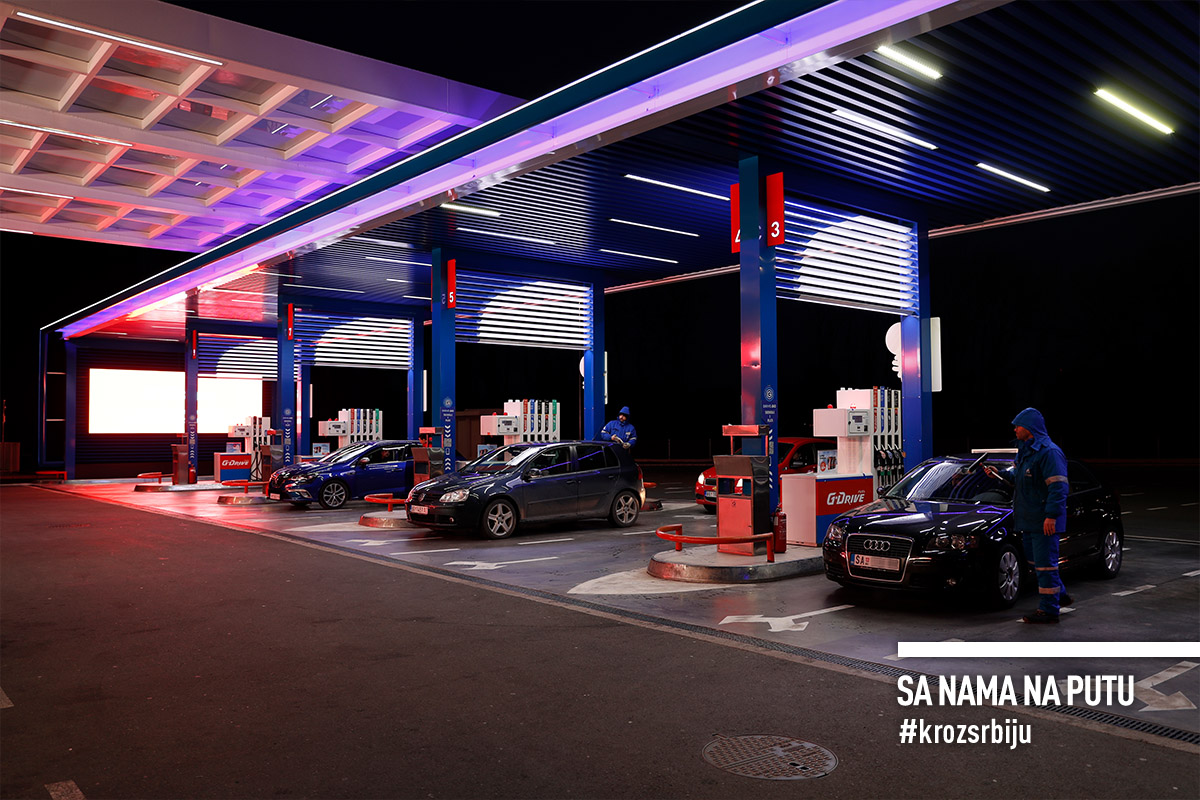When the winter comes and the north wind starts to breeze, one should stick to the south. Think those who don’t know anything about the tiny village that has cleverly dealt with the plain winds and great snowfalls. Where it is most lively right in the winter. We had the audacity to pay it a visit. Along the way, we intend to explore the area and drop by to a place of famous landowners and of a proud name. From the highway to Subotica, we turn to Srbobran.
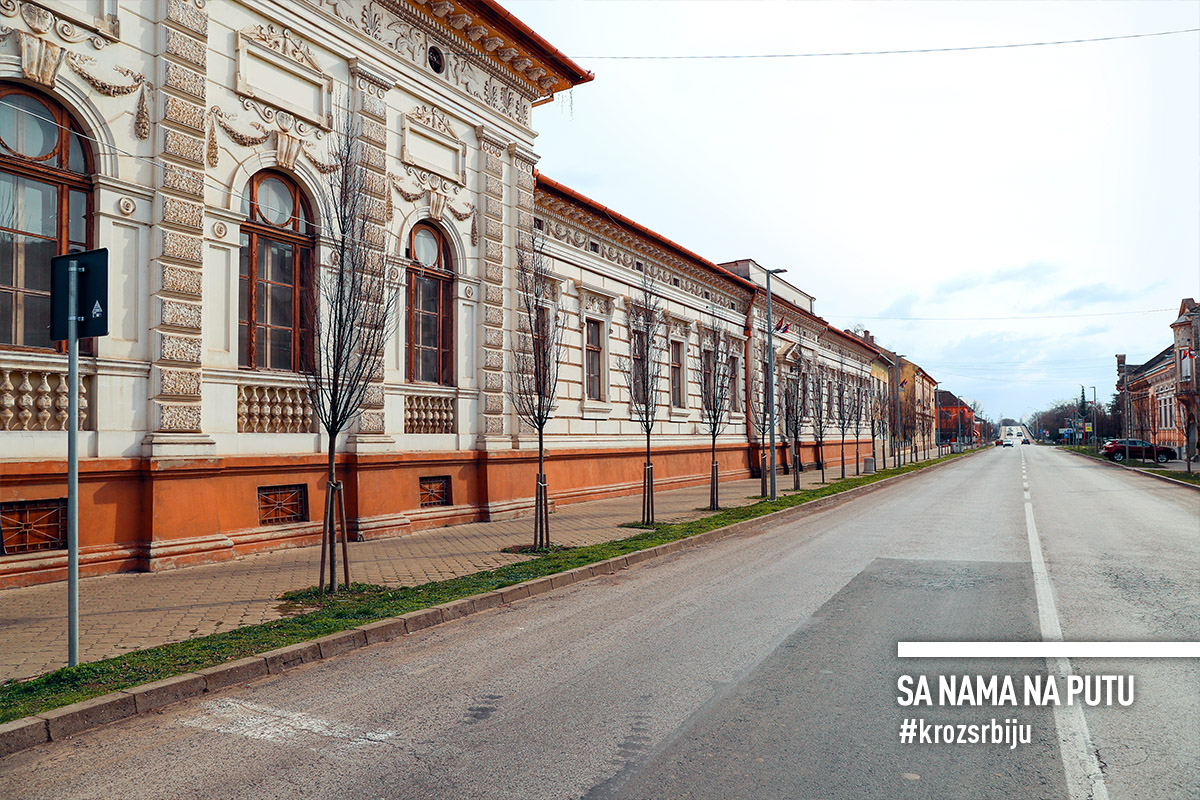
Why visit Srbobran and Turija
1. Because Srbobran is a lovely town with a rich history
For a long time, it was called Szenttamas, or a similar version of the name St. Thomas. According to Hungarian written sources, Srbogradski or Srbograd (“Serb Town”) was added to the name in the middle of the XVIII century. After the Great War and the annexation of Vojvodina to Serbia it was named Srbobran after the fortress-ditch which was built at the present-day Srbobranska Street during the Revolution of 1848. As Serbs were in those ditches, it was symbolically called Serbian, and some time later – Srbobran (“Serb Defense”). Today, no landmarks, no mention of the famous ditch.
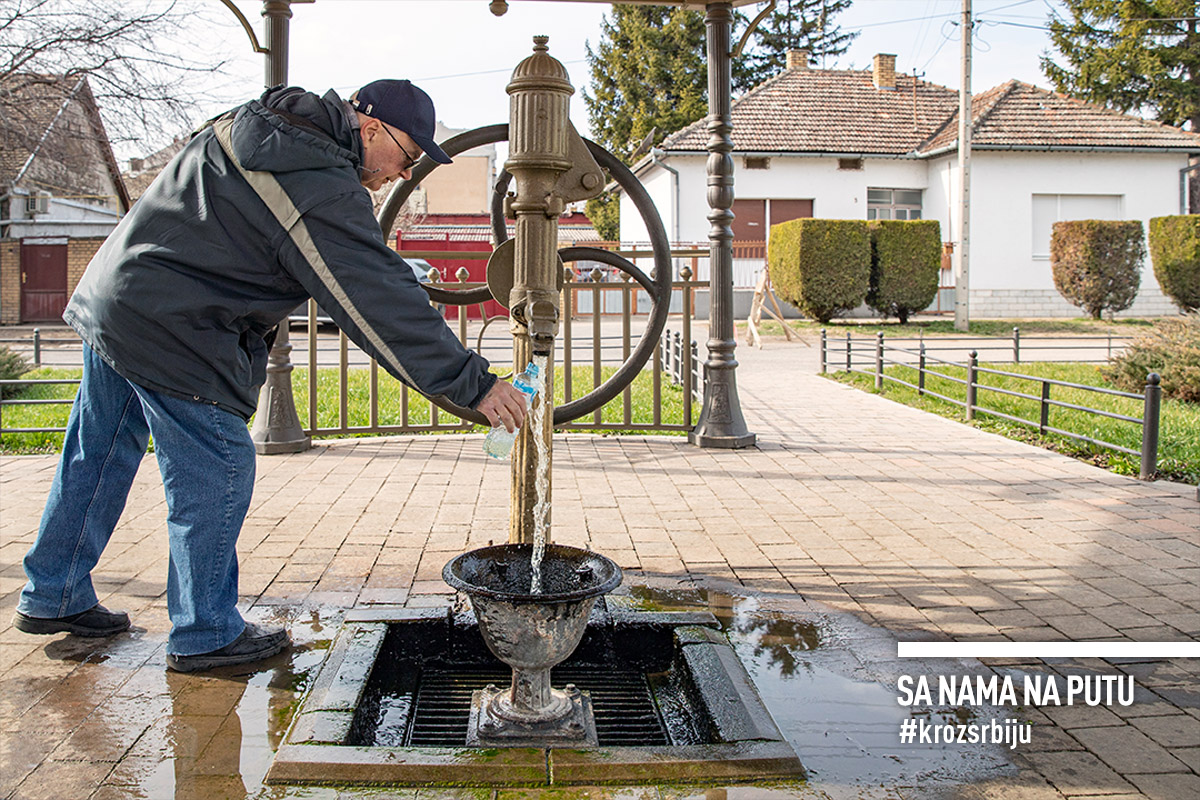
Srbobran is embraced by many waters – the Krivaja River, the Great Bačka Canal and several ponds, and they have endowed exceptional fertility to the land. It is rich in thermal waters, which are not used for medicinal purposes, but still has its source of health, the Yellow Well (“Žuti bunar”). At the center, under the sweet roof, there is a continuous flow of water. Yellow, rich in iodine. Don’t be discouraged by the color, or the smell, it’s not very pleasant, but one gets accustomed after a few sips. It’s worth squeezing your teeth for health’s sake.
The fertile land once gave birth to the landowners. The most famous is the Dunđerski family, which the locals also remember for their benevolence. Even today, one can see the magnificent buildings of once the richest prečan family. In the local Orthodox cemetery here is the Dunđerski Chapel, built by Lazar, the father of Lenka, probably the most famous member of the family thanks to the pen of the great romantic Laza Kostić. At the entrance to the cemetery is the Mausoleum of Stevan Dunđerski. It is reminiscent of the domes of medieval Serbian monasteries. Its construction cost 200 wagons of wheat. Golden wheat ears is still worth gold today. We didn’t set foot inside. It is under renovation. The cemetery is also unusual because of the large number of ossuaries, family tombs, which resemble smaller mausoleums. Not that the cemetery can be considered a suitable tourist destination, but sometimes it can tell a lot about the locals and their lives.
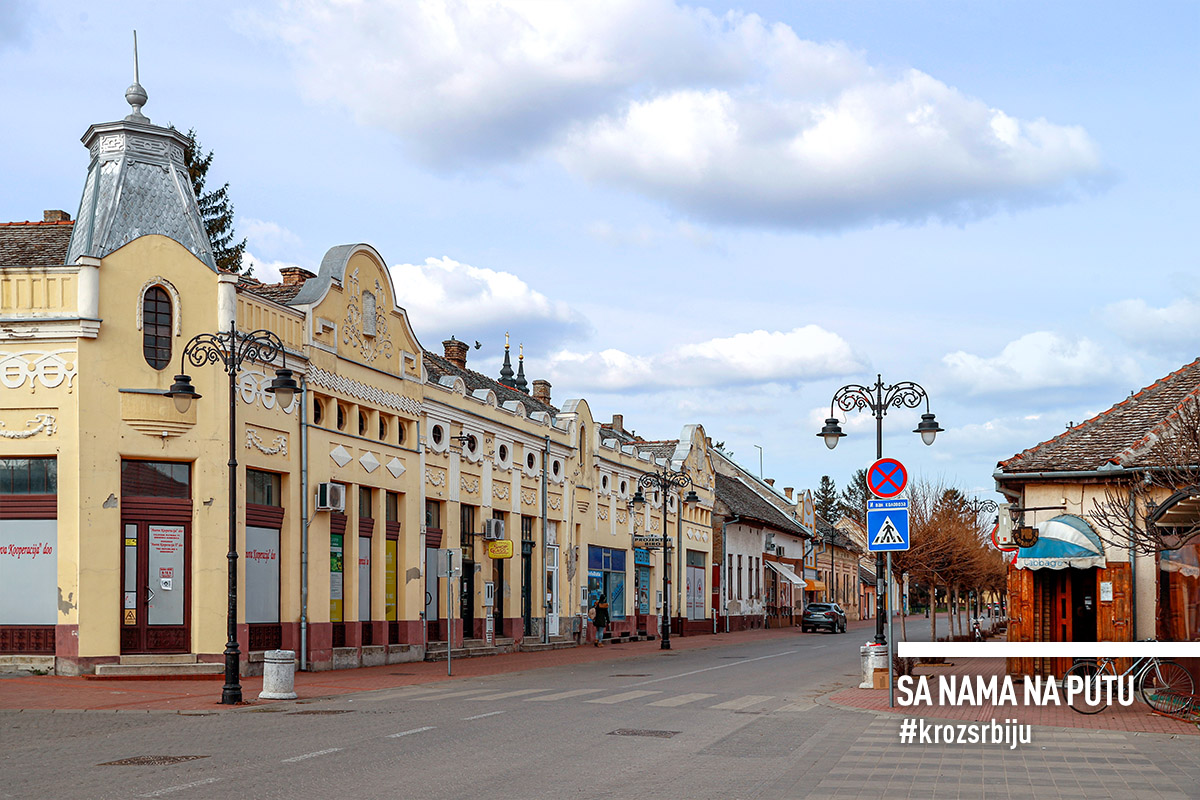
Srbobran streets also carry royal spirit, for once the king walked there. Admittedly, then officially heir to the throne, Alexander I Karađorđević. He was hosted by Stevan Dunđerski in his lavish lounge in 1919. He was driven there by a beautiful carriage. Unfortunately, our host did not have a carriage and two black horses to lend to us to trot around the alleys and have a royal experience of the posh houses of vivid colours. We had to walk, but we enjoyed it just as much.
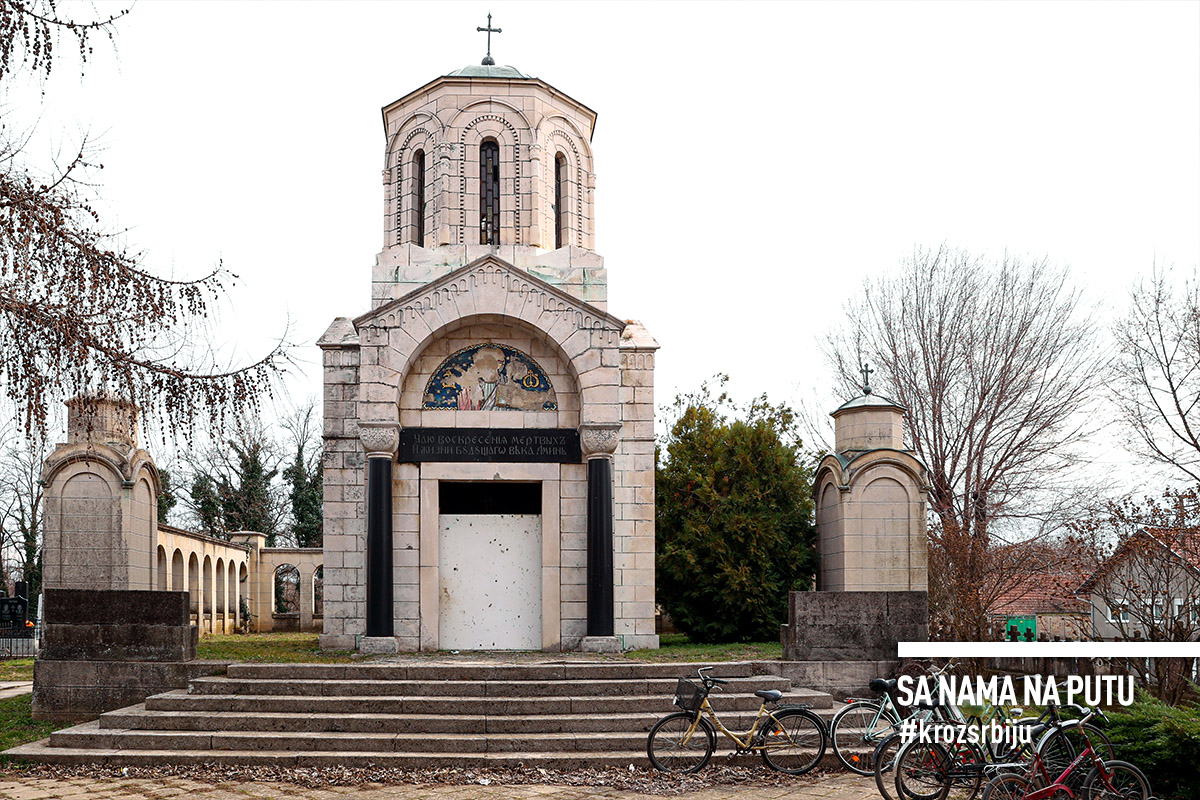
The fertile land, hard-working hosts and fighting past make the locals proud, as our host proudly tells us. It’s a delight to listen to him. How much love is woven into the descriptions of every corner of his home. For him, it is certainly special and the most beautiful. Honestly, it’s worth a visit. So instead of going to the roadside tavern, stop by Srbobran and take a couple of hours to explore the exciting surroundings. There will be no lack of beautiful surprises.
2. Because two Christian churches live together in Srbobran
History, especially in mixed and smaller places, is often also reflected in religious buildings. While different churches and religions survive, there is respect and coexistence. That’s exactly the kind of environment Srbobran looks like.
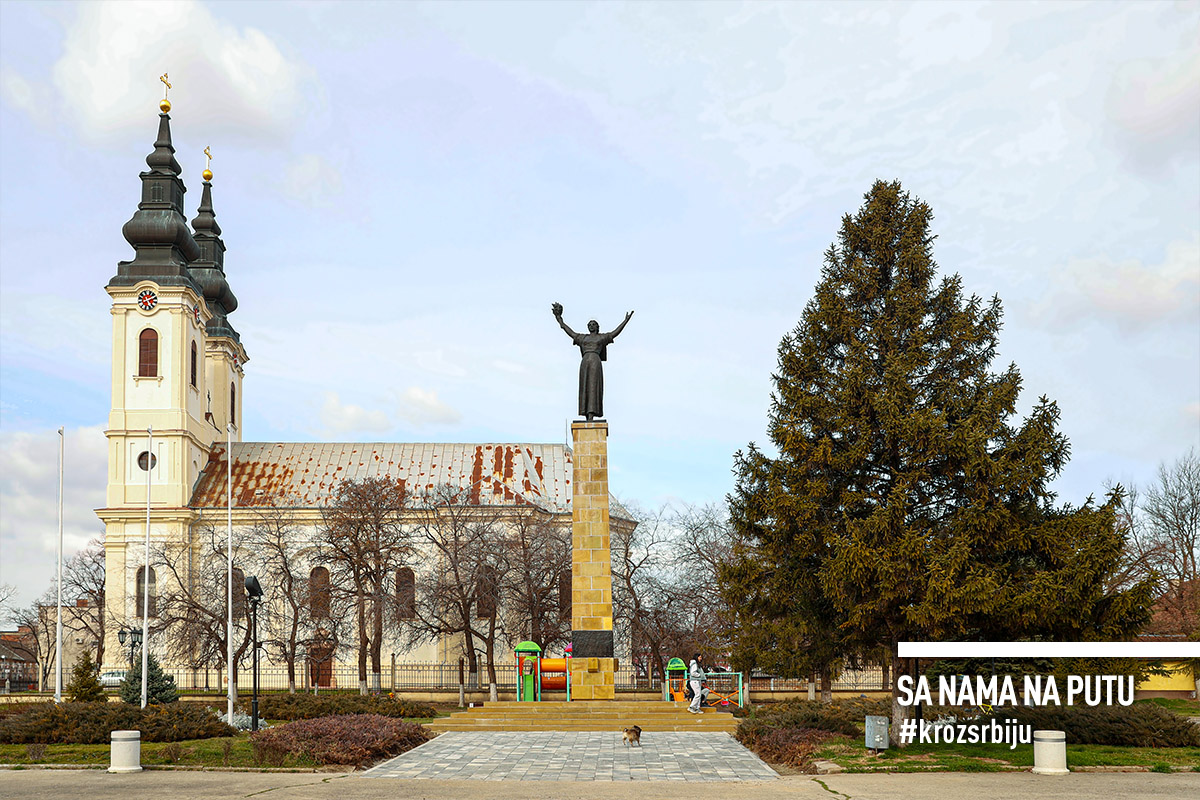
Already as one approaches the town, two giant towers are visible. They symbolically represent the Serbian people on both sides of the Sava and the Danube, and the monumental nave of the church represents their unification and strength. The bells, they say, can be heard for up to 25 kilometers around. The Orthodox Church of the Epiphany of the Lord was founded in 1787 and was under construction for about twenty years. It would suffer in any armed conflict, and there were some in this area. The bells would then be silenced and melted into cannons. But the locals were more tenacious than the cannonballs, so they would always rebuild it.
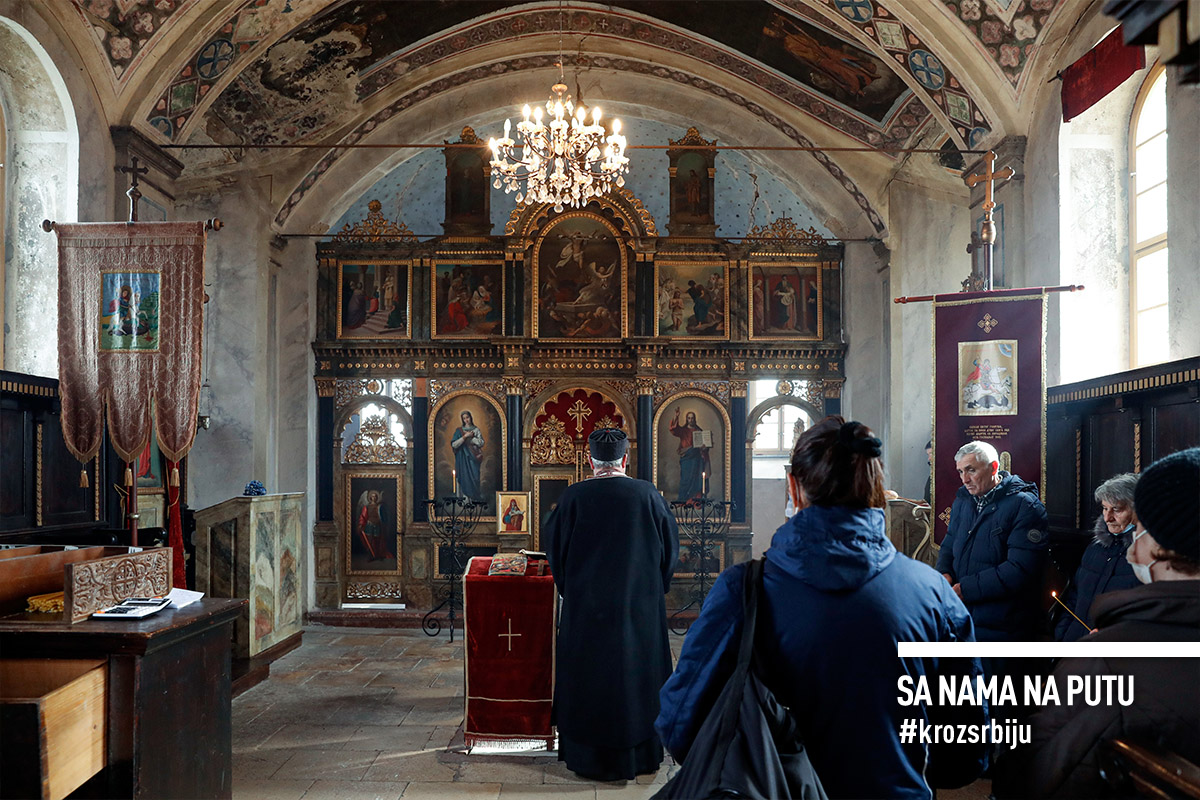
It is considered one of the most beautiful Orthodox places of worship in the Pannonian region and a protected cultural monument. But the door is closed. Very unusual for an Orthodox temple in Serbia. In front of the church is a landscaped park, a favorite meeting place for young people, and a Monument to fallen combatants and victims of fascist terror.
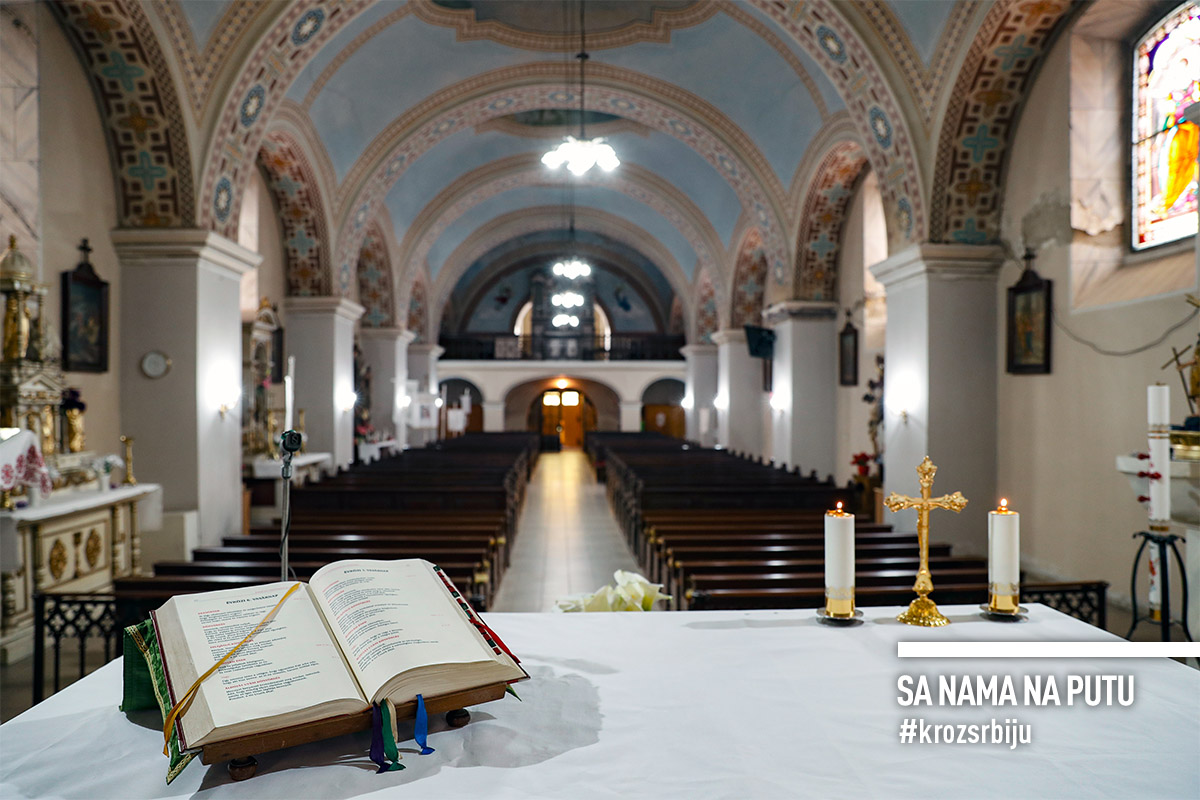
At the other end of the town is the Roman Catholic Church of the Exaltation of the Holy Cross. The first place of worship at today’s place was built in 1783 without tower and without cross. As the population, and thus the number of believers, grew, in 1815 a real place of worship was built with a high tower and a cross. And it, like the Orthodox Church, also suffered during the Revolution of 1848. It was renovated about twenty years later, and today’s appearance takes shape at the beginning of the last century. A large building that dominates, as we assume, the Hungarian part of Srbobran. We went in there. A splendidly painted vault, colorful stained glass and various figurines. The winding narrow staircase leads us up to the balcony from where the interior shines with full glow. From there breaks the sound of organ.
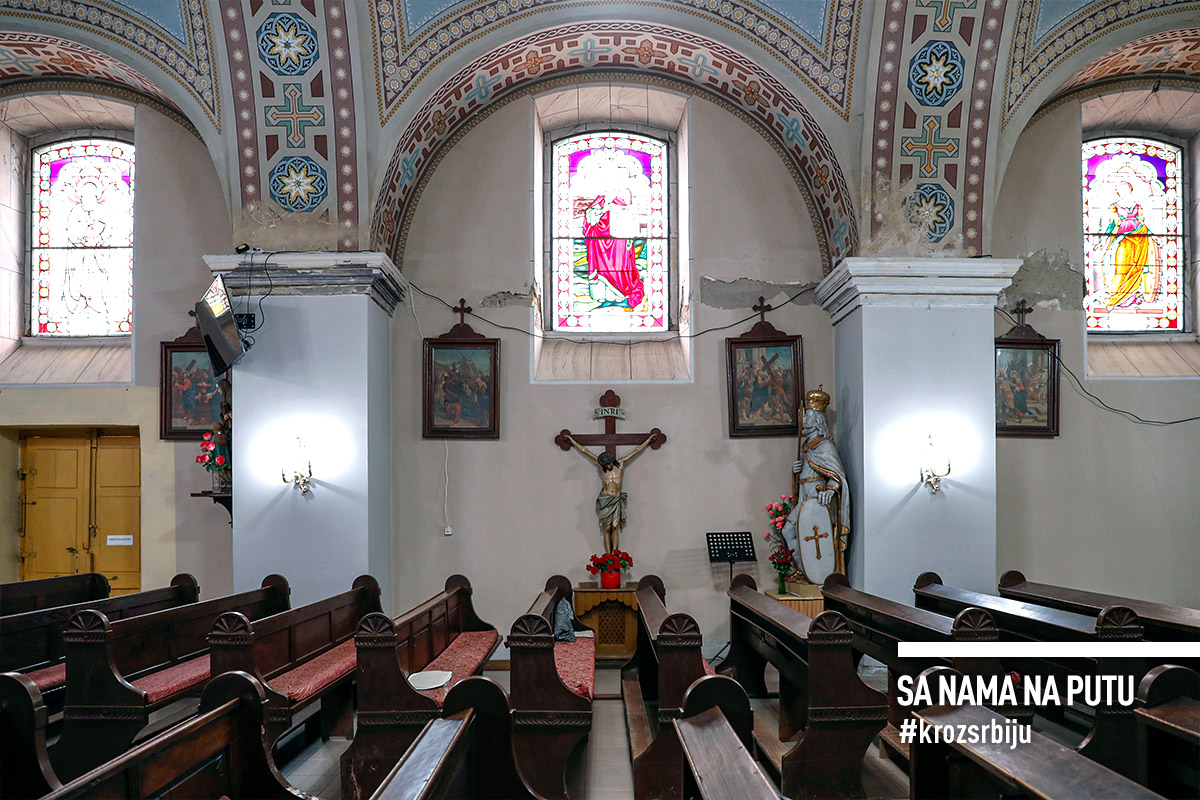
3. Because the Turija sausage holds the Guinness record
It all started in the winter of 1985. It was quite snowy, say the townspeople. When there is nothing to do in the field, the people go into their houses, firewood burning, drinking hot brandy, and chatting. And what else would hunters and hosts discuss than about who is a better sausage maker? And so teasing began. Volunteers for the evaluation gathered in no time and the competition began, in a smaller circle. But already the following year, distinguished hosts applied, news spread around the area, crowds gathered, and the competition became serious. Finally, to see what they ended up with, some money remained in the piggy bank, and the Sausage festival of Kobasicijada got a humanitarian mark. Thus, one of the most famous and significant events in Serbia emerged from winter leisure and local teasing customs.
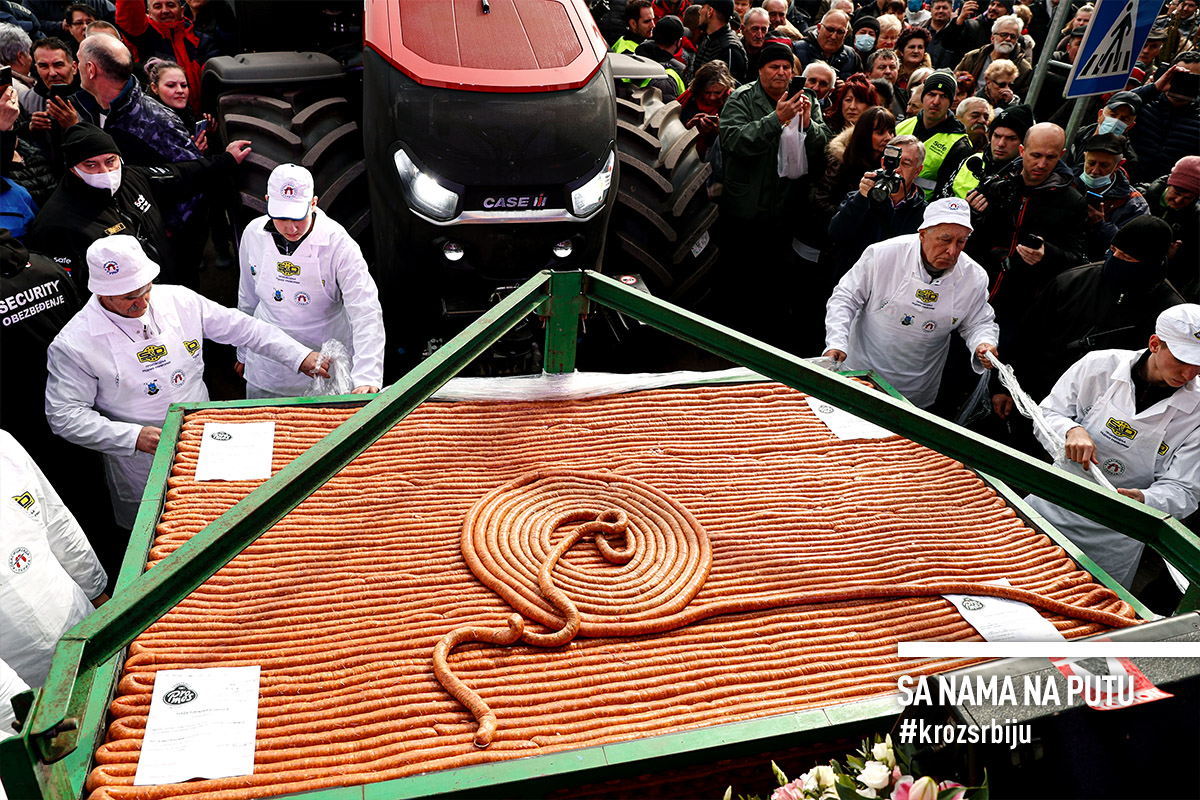
On the last weekend in February, the tiny Turija becomes the centre of Serbia. The crowd comes from everywhere, and there can be one or two foreigners, too. Everyone assembled to see the Guinness wonder live. It was entered in the Book of Records in 2013, and since then, every year, Turijans have set a new one. They haven’t had any competitors for a long time. One cannot go down the main street. Crowds squeeze among the booths that offer everything, just like on any other fair. The most interesting are certainly meat booths with marvelous delicacies. The stage is set in the center of the village. The cultural and artistic program runs from Friday. Folklore ensembles alternate, kids in folk costumes also perform kolo dance, and presenters recount the events from previous Sausage festivals. Saturday at noon, Her Majesty arrives. She is driven by a tractor, which honks tirelessly trying to dispel the curious crowd. When he finally manages to make it to the stage, the sausage is sliced like a red ribbon and the merry celebration can begin, officially. The Sausage festival is something to experience, at least once in a lifetime. An exciting and uncommon event, especially for city kids.
4. Because Beljanska pond is a nature park
It is located between Srbobran and Turija. The Beljanska pond represents a significantly preserved wet area. It is habitat to numerous rare species of plants and animals, and the spawning grounds of several indigenous fish species. It has adopted about 130 species of birds, and there are some amphibians and reptiles, too. There are insects, understandably, in abundance. It is an ideal place for passionate nature lovers and photography aficionados and a paradise for anglers. A well-maintained health trail, four kilometers long, is an opportunity to stretch your legs. And when you get tired and hungry, there is a well-tended barbecue area nearby.
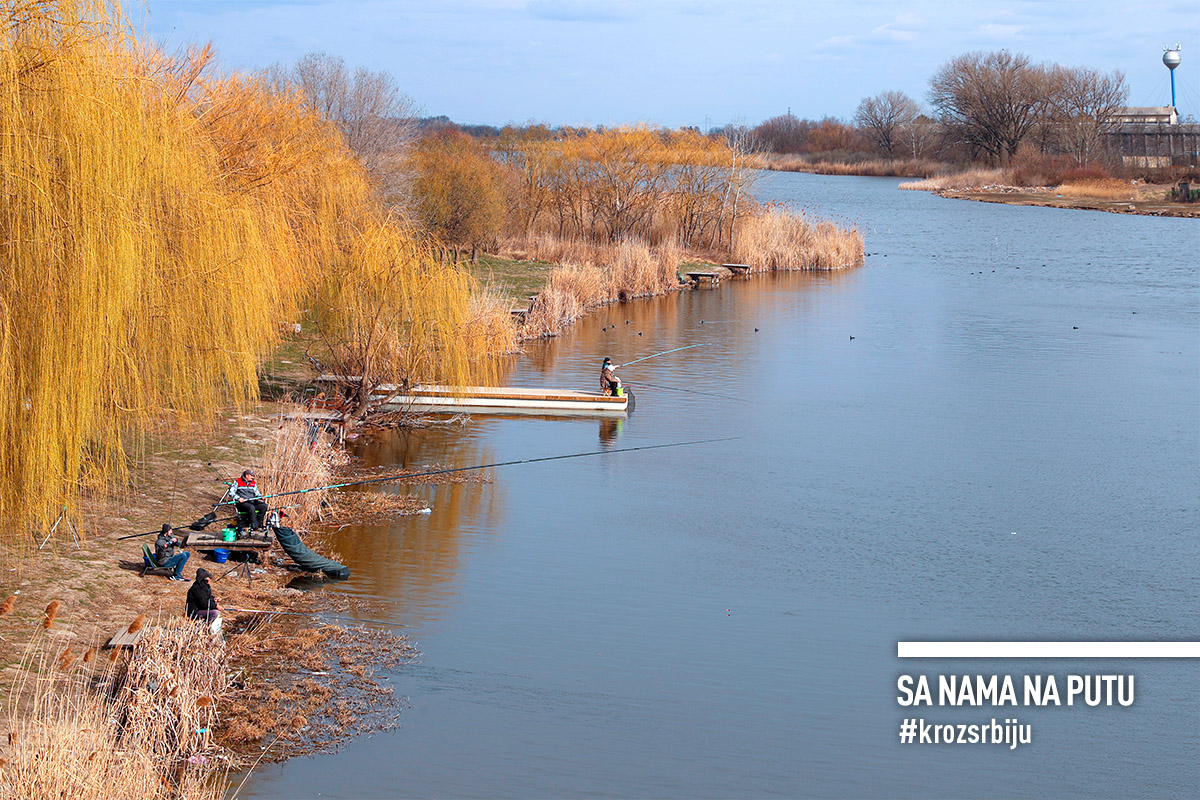
5. Because Salaš Tatić is a family oasis
Not far from the Beljan pond, there is Salaš Tatić. It stretched across the orchards and vineyards, all the way to the shores of the Great Bačka Canal. There is a pontoon made for sunbathing and summer swimming. Kids can run carefree on the spacious lawn, try their skills on the outdoor playground props, and mingle with sheep, lambs, and a pony. An angler is easy to become here, you just have to throw the hook, and for romantic souls, you are provided with a boat ride. Something for each sense. Of course, when the snow starts melting and the sun warms this tame plain of Bačka.
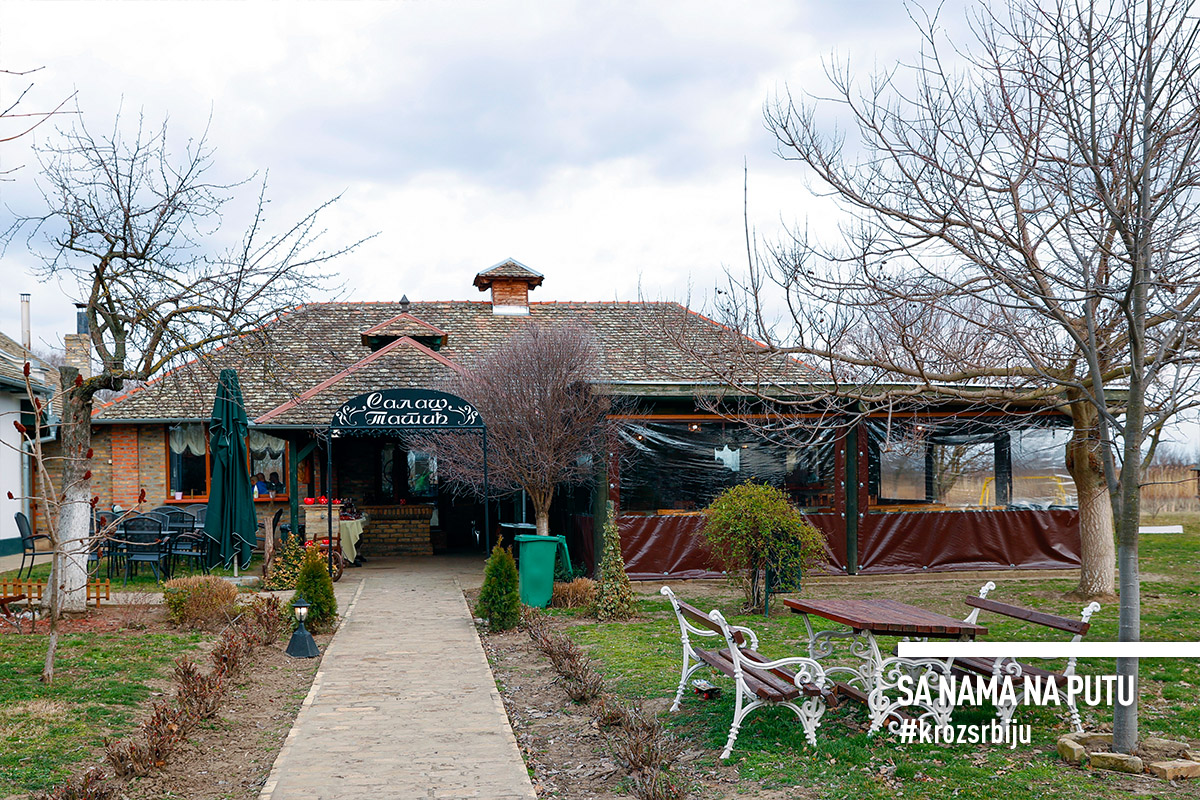
6. Because Tatić’s goulash is seasoned with bećarac
A salašar story is not complete without a home-cooked snack. A brick-and-wood restaurant, decorated with ethnic details and a few pieces of antique furniture and utensils, blends in perfectly with the surroundings. Although it is not yet dark, the atmosphere inside is already boiling. The joyful partying of a middle-aged group has already been there for quite a while. We would like to try a lot of things, but on the weekends, the choice is narrowed. The house offers sausages. Even though our trunk is packed with those from Turija, we don’t mind. The second choice is beef goulash with noodles. They are skilfully curled at the bottom of the bowl, which gives them a special juiciness. All is perfect. We expected nothing less. The deprivation of a few more salaš delicacies has been compensated by general cheerfulness. The band is tireless, they can play all kinds of things. And then the real treat begins – bećarac. Several great ladies sing and keep outwitting with experienced musicians. And no one to take a break, let alone give up. They accompanied us with humour. While there is good-host food and song, there’s no winter.
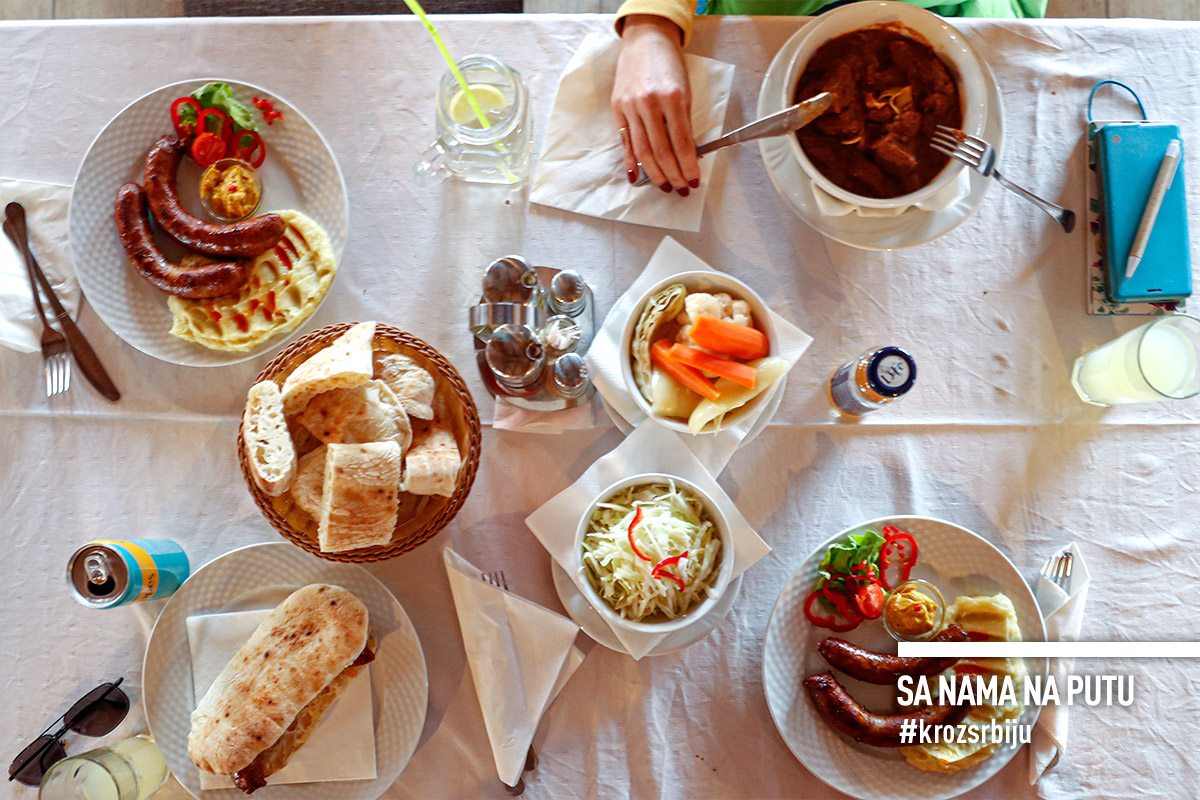
7. Because PS Novi Sad 16 has a wide range of products
After the bećarac, on the way back, we sought refreshment at the Gazprom station on the way out of Novi Sad. Juicy and fresh donuts have further lifted our spirits, and a wide range of waters, juices and energy drinks have provided us with much-needed refreshments for the journey back. As we add up the impressions and take away the calories on the way to Belgrade, we think about everything we experienced in Srbobran, a place that was a historical “dam” from the great empire. And we are thinking about what Serbia would look like today if it were not for the brave Srbobran folks.
